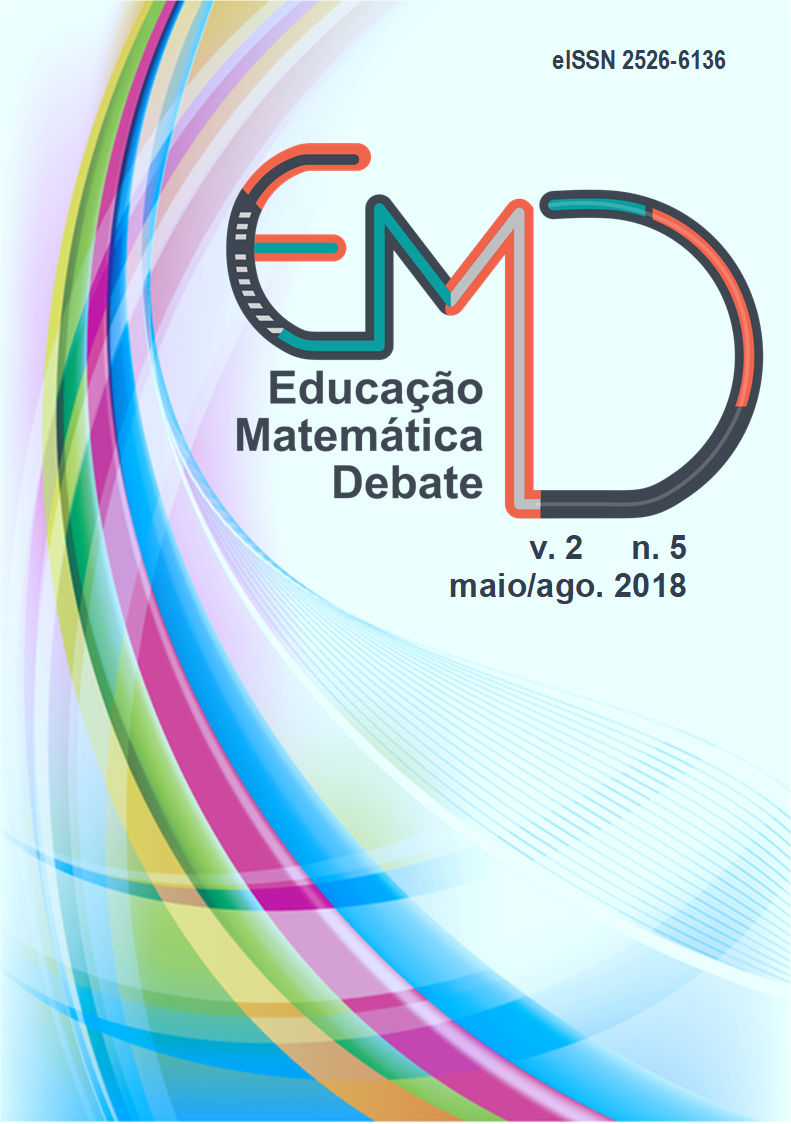Numerical thinking: evolution of the cardinal number in Early Childhood Education
DOI:
10.24116/emd25266136v2n52018a03Keywords:
Numerical Thinking, Natural Number, Cardinal Number, Early Childhood EducationAbstract
In this paper we focus on the cardinal aspect of the natural number, where the number is associated with a set to indicate the amount of elements it has. It is about studying how cardinal thinking is in children in pre-school education. Presenting tasks with the logical-mathematical schemes of the cardinal number, and taking into account that each task corresponds to the child's maturational age, we analyze the strategies followed, as well as the mistakes made by those students who have not overcome this task, achieving all this diagnose the numerical thinking in its cardinal aspect.
Downloads
References
CLARK, Robin; GROSSMAN, Murray. Numbersense and quantifier interpretation. Topoi, v. 26, n. 1, p. 51-62, mar. 2007.
CORDES, Sara; GELMAN, Rochel. The young numerical mind: when does it count? In: CAMPBELL, Jamie I. D. (Ed.). Handbook of mathematical cognition. New York: Psychology Press, 2005, p. 127-142.
FEIGENSON, Lisa; CAREY, Susan. Onthelimits of infants' quantification of small object arrays. Cognition, v. 97, n. 3, p. 295-313, oct. 2005.
FERNÁNDEZ FESCALONA, Catalina Maria. Análisis cognitivo de la secuencia numérica: procesamiento de la información y epistemología genética. Pensamiento Educativo, Santiago, v. 52, n. 2, p. 172-188, 2015. DOI: 10.7764/PEL.52.2.2015.10.
FERNÁNDEZ FESCALONA, Catalina Maria. Estados de conocimiento en el desarrollo de la secuencia numérica. Unión, v. 49, p. 97-121, abr. 2017.
FERNÁNDEZ FESCALONA, Catalina Maria. Una propuesta didáctica para trabajar la secuencia numérica en el segundo ciclo de educación infantil. Enseñanza de las Ciencias, v. 34, n. 2, p. 185-204, jun. 2016.
FUSON, Karen; RICHARDS, John; BRIARS, Diane J. The acquisition and elaboration of the number word sequence. In: BRAINERD, Chales J. (Ed.). Children´s logical and mathematical cognition: progress in cognitive development. New York: Spriger-Verlag, 1982, p. 33-92.
FUSON, Karen C. Children’s countinq and concepts of number. New York: Springer-Verlag, 1988.
GALLISTEL, Charles Randy; GELMAN, Rochel. Mathematical cognition. In: HOLYOAK, Keith; MORRISON, Robert G. (Ed.). The Cambridge handbook of thinking and reasoning. Cambridge University Press, 2005, p. 559-588.
GELMAN, Rochel; GALLISTEL, Charles Randy. Language and the origin of numerical concepts. Science, v. 306, n. 5695, p. 441-443, oct. 2004. DOI: 10.1126/science.1105144.
HARTMANN, Matthias. Numbers in the eye of the beholder: what do eye movements reveal about numerical cognition? Cognitive Processing, v. 16, p. 245-248, sep. 2015.
LE CORRE, Mathieu; CAREY, Susan. One, two, three, four, nothing more: an investigation of the conceptual sources of the verbal counting principles. Cognition, v. 105, n. 2, p. 395-438, nov. 2007. DOI: 10.1016/j.cognition.2006.10.005.
PATRO, Katarzyna; HAMAN, Maciej. The spatial-numerical congruity effect in preschoolers. Journal of Experimental Child Psychology, v. 111, n. 3, p. 534-542, mar. 2012. DOI: 10.1016/j.jecp.2011.09.006.
Downloads
Additional Files
Published
How to Cite
Issue
Section
License

This work is licensed under a Creative Commons Attribution-NonCommercial-ShareAlike 4.0 International License.





















